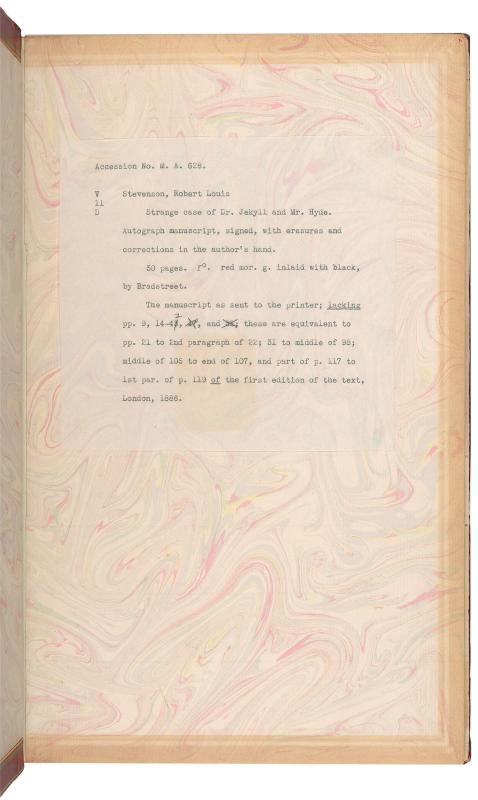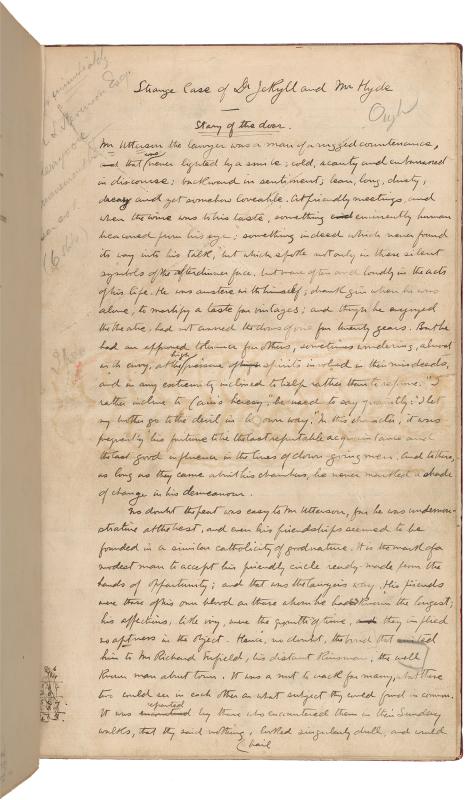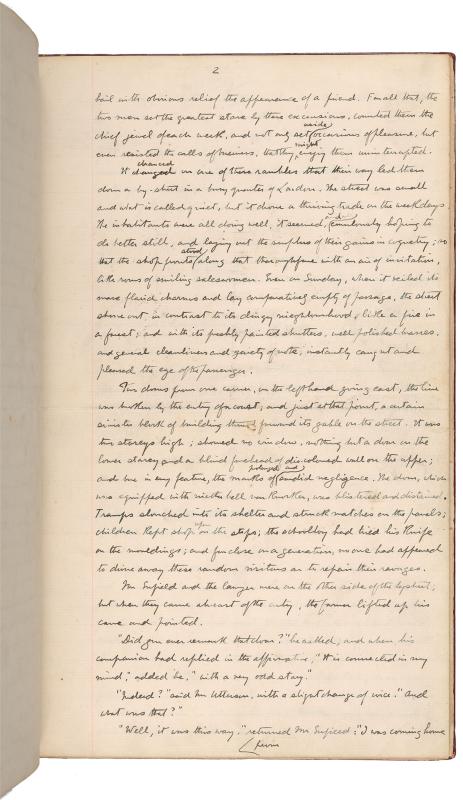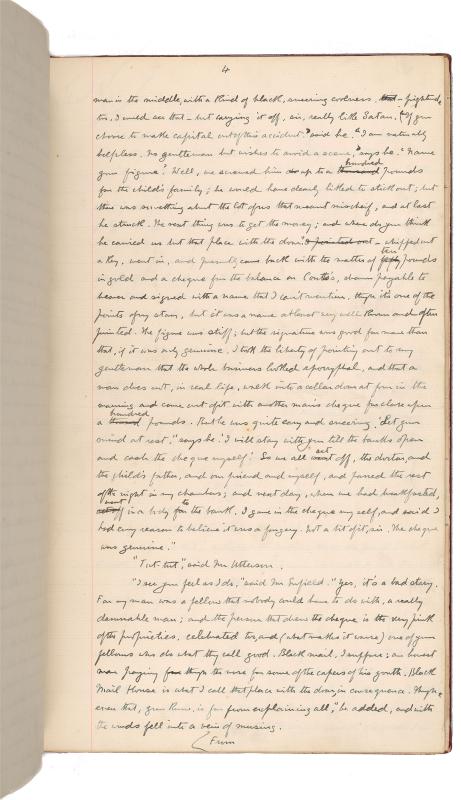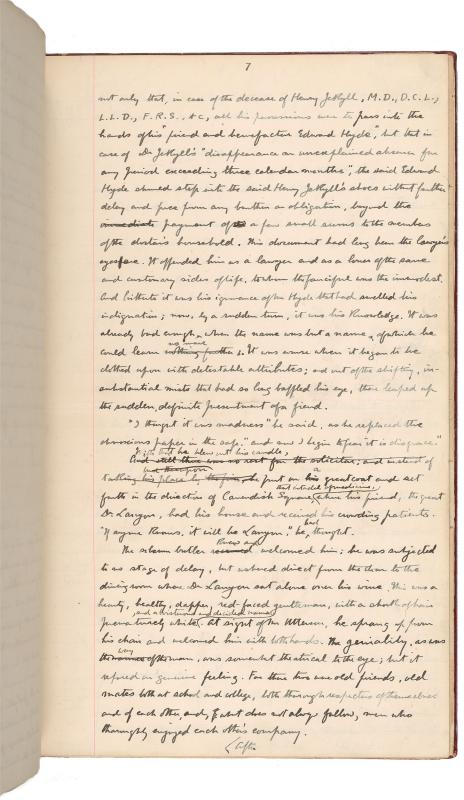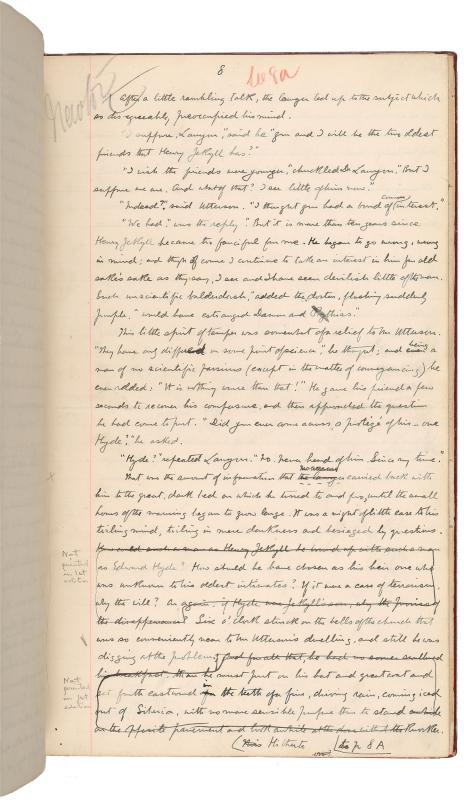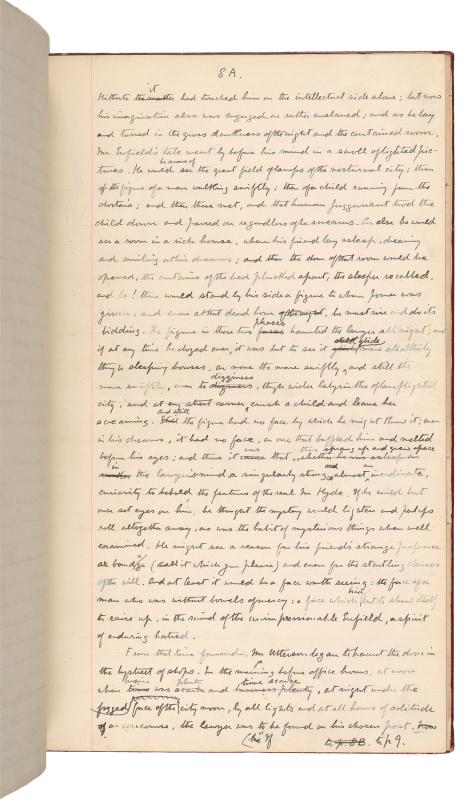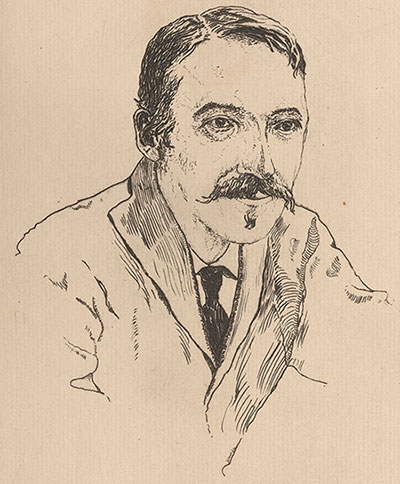
This manuscript of Robert Louis Stevenson’s novella The Strange Case of Dr. Jekyll and Mr. Hyde is the copy sent to the publisher Charles Longman in late October 1885, about six weeks after Stevenson first conceived of the idea. The Strange Case of Dr. Jekyll and Mr. Hyde is composed of a series of accounts and texts that slowly reveal the story of Dr. Henry Jekyll’s decision to create a separate body for himself, Edward Hyde, through which his baser instincts can be expressed, and the consequences of that decision. As in other tales of problematic births from Frankenstein to Jurassic Park, the monster, once out, begins to assert control over its creator.
The manuscript has been marked up, primarily in pencil, either by the compositors who set the type or by someone else (perhaps a managing editor) at the publishing house, Longmans, Green & Co., that published the first edition of the book on January 9, 1886. The text appears to have been divided up between different compositors: for instance, the name “Webster” appears in the lefthand margin on pages 5 and 46, whereas one “Shelley” takes over at page 12.
The manuscript also contains Stevenson’s edits, in some places quite extensive. Two sections in particular, one at the start of Henry Jekyll’s statement and one at the end (pages 47 and 61), show Stevenson re-working significant passages of the book even in this semi-final stage of writing. In both instances, Stevenson complicates the distinction between the two poles that Jekyll and Hyde are supposed to represent, emphasizing the difficulty of telling one from another, or keeping them apart.
On page 61, for example, Stevenson adds a phrase to his description of Jekyll and Hyde’s relationship, a phrase that jars in the novella’s world of discreet bachelors and professional gentlemen of science, medicine, and the law. The sentence “And this again, that that insurgent horror was knit to him closer than a wife” becomes “And this again, that that insurgent horror was knit to him closer than a wife, closer than an eye,” underscoring not only the intimacy of Jekyll and Hyde’s association, but also how it destabilizes even that apparently known quantity, a body’s borders.
The Morgan’s manuscript is not complete. The central chapters, covering the murder of Sir Danvers Carew and the denouement of Jekyll’s experiment, have not survived. After Stevenson’s death in 1894, the manuscript was owned by Isobel Strong, his stepdaughter; J. Pierpont Morgan bought it from her in 1909. Strong had given away several leaves, three of which made their way back to the Morgan Library in 1950s and ‘60s as the generous gifts of Edwin J. Beinecke. One other leaf is now at the Robert Louis Stevenson Museum in St. Helena, California. However, it seems likely that even when Strong owned it the central section was not extant.
Introduction by Sal Robinson, Assistant Curator of Literary and Historical Manuscripts, 2019

